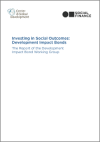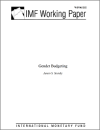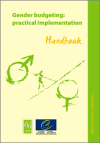FOUND 18
This paper by the Commonwealth Secretariat (1999) provides a rationale for the strategic goals of the Commonwealth Gender Budget Initiative at the national level and highlights the need for integrating a gender perspective in macroeconomic policies and budgets.
This publication intended for those who wish to better understand the links between gender equality, public policy formation and development financing.
Budgeting for Equity: Gender Budget Initiatives Within a Framework of Performance Oriented Budgeting
The publication discusses the tools needed to determine how a government budget impacts the different sexes. The publication achieves three objectives. First, the background of gender responsive budgets is described for readers who are not as familiar with the initiative.
The report, authored by Professor Diane Elson, a leading feminist economist, makes a significant contribution to the advocacy work on the transparency of budgets. It provides arguments for increasing the accountability of government budgets to women's rights.
A summary guide for policy makers, gender equality and human rights advocates" is a publication based on a report by Diane Elson "Budgeting for Women's Rights: Monitoring Government Budgets for Compliance with CEDAW" by UNIFEM 2006.
Budgeting for Women's Rights Monitoring Government Budgets for Compliance with CEDAW: summary..(Fr )
A summary guide for policy makers, gender equality and human rights advocates" is a publication based on a report by Diane Elson "Budgeting for Women's Rights: Monitoring Government Budgets for Compliance with CEDAW" by UNIFEM 2006.
Paper discussing the definition and measurement of Sustainable Development Goal (SDG) Indicator 5.c.1. (reclassified to Tier II) and comparing Indicator 5.c.1 with other SDG fiscal indicators.
This practical guide by Debbie Budlender and Guy Hewitt, based on experiences of past gender budget initiatives, provides a comprehensive outline of how to engender budgets.
This IMF Working Paper examines how public processes can contribute to improving women's status. Gender budgeting, which refers to the systematic examination of budget programs and policies for their impact on women, has been tried in a range of countries in recent years.
The focus of this publication is to act as a guide to the practice of gender budgeting. It is not a first-step book. There are many publications which articulate the rationale for, the background to and the history of gender budgeting.







